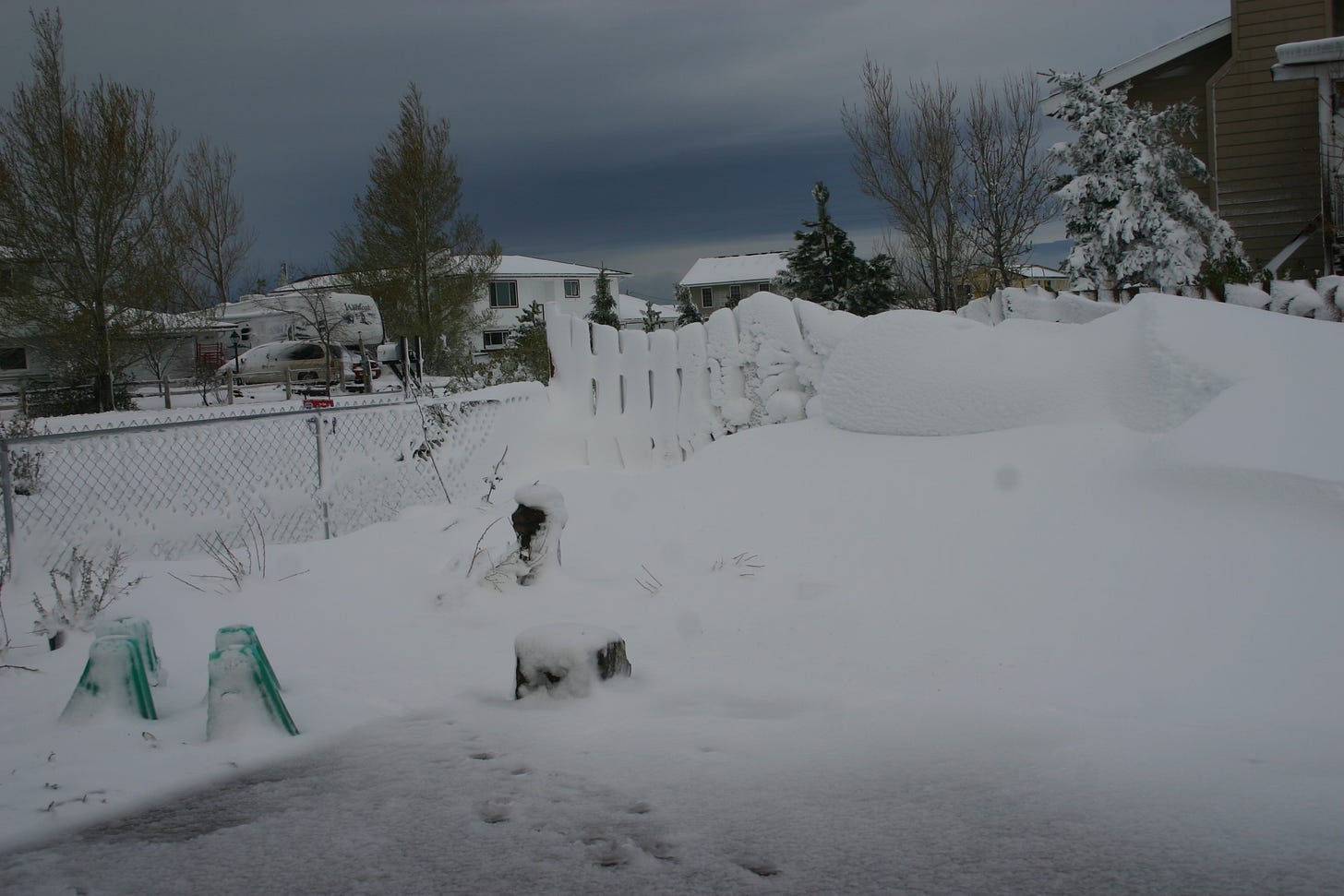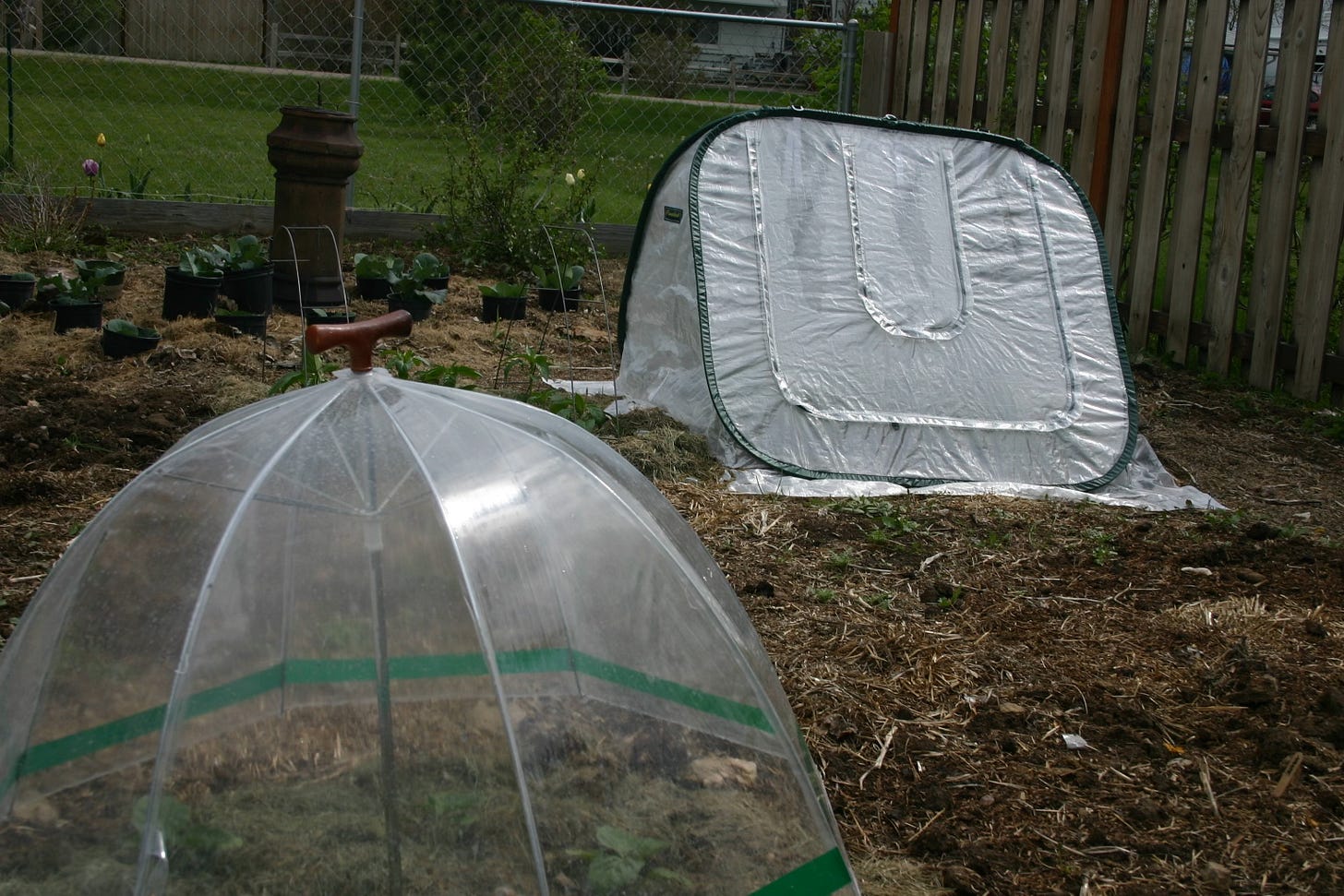Resist the Urge to Plant...
Unless you have a few season-extending tricks up your sleeve!
The forecast hints that we might be flirting with 80° next week. Don't be fooled! With 35 years of living in gardening in Montana, I have experienced many early Mays when it felt as if it was time to plant, only to be scrambling a week — or several weeks — later covering plants to save them from frost or snow.
My message to many gardeners toying with the thought of planting tomatoes next weekend is don't… unless you have a few season-extending tricks up your sleeve.
When to Plant
Deciding when to plant primarily depends on the soil temperature. I used a thermometer the other day and recorded 42 degrees in my raised beds. This temperature is plenty warm enought to seed spinach, lettuce, radishes, beets, and peas. Onion sets or plants will also be fine.
Planting seedlings is a different situation. The optimal condition for transplants is a soil temperature of 60 degrees, but it's not absolutely necessary. I've planted cabbage, broccoli, cauliflower, tomatoes, and peppers when the soil was undoubtedly cooler than that, and even though they do not grow very well initially, it's nice to have them in the ground.
An option to warm the soil before planting is to use clear or black plastic to warm up the soil the week before planting. But even if you haven't, as long as your soil is in at least the mid-40s, the plants will not die.
Wall-O-Waters
Those who know me know that Wall-O-Waters, the water teepees developed in Kalispell, Montana, over 40 years ago, are my favorite season-extending tool. Growing up in Ohio, my father used them on many of his tomatoes, and I've sworn by them for decades. I've had plants buried in snow and have never lost one in a Wall-O-Water.
To use them, plant your transplant and place a five-gallon bucket over it. Set the Wall-O-Water around it and use a hose to fill each water cylinder. Next—and this is where the magic happens—grip the bucket and pull straight up, allowing the Wall-O-Water to lean into itself. Your plant is now in a warm water cocoon.
As the plant grows, you can remove the Wall-O-Water before it is too tall to remove the plastic without harming the leaves. You can also leave it around the plant by squeezing out the water and leaving it in place. I often do this because it protects the plant from the wind, even if it is empty.
Besides tomatoes, Wall-O-Waters works well for peppers, squash, eggplants, and any sensitive plant you'd like to protect.
Floating Row Covers
Floating row covers are my other go-to season-extending tool. They are made of light, spun-bonded polyester and can offer up to four degrees of protection. If there is even a risk of frost, it's worthwhile to place the floating row cover over the plants, and it's even better to plant the transplants underneath it in a low tunnel setup.
Solar umbrellas and low tunnels made with plastic are also helpful, although the plastic does not have the same frost protection as the unique spun-bonded polyester fabric. Sensitive plants, like basil, might be black in the morning if the temperature dips much below freezing. In this case, toss a blanket or floating row cover over the solar umbrella or tunnel to add extra protection.
Gardeners have used cloches in gardens for centuries, which are undoubtedly helpful in protecting plants during cold nights. Beautiful, classic-looking models are available, although a simple gallon milk jug does an excellent job for most of us. Cut off the bottom of the jug and place it over the plant, pressing it firmly into the soil. During warm days, remove the cap to prevent the plant from cooking, a realistic problem at this time of the year when we're dancing between cold and hot. Leave the cloche on until the plant until it outgrows it.
Once again, though, the plastic has limitations. If the forecast suggests that the temperature will drop below 30 degrees, provide additional protection.
The upcoming gloriously warm temperatures are just a tease. While it's tempting to go all out and plant the entire garden, use prudence unless you can utilize these season-extending techniques to protect the plants when Mother Nature gives us another blast of cold.










This is really helpful. Thank you!
Some great ideas! Thanks